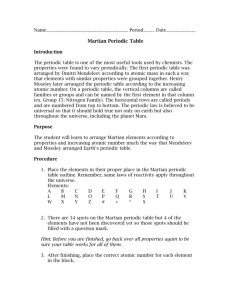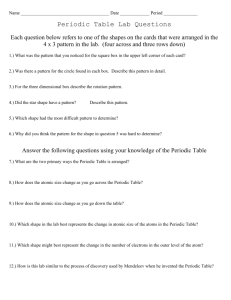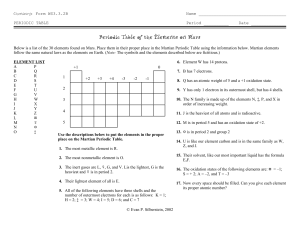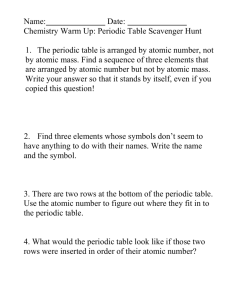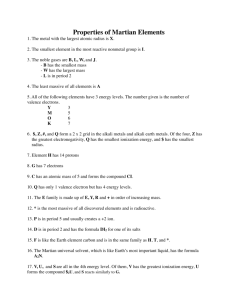Martian Periodic Table
advertisement
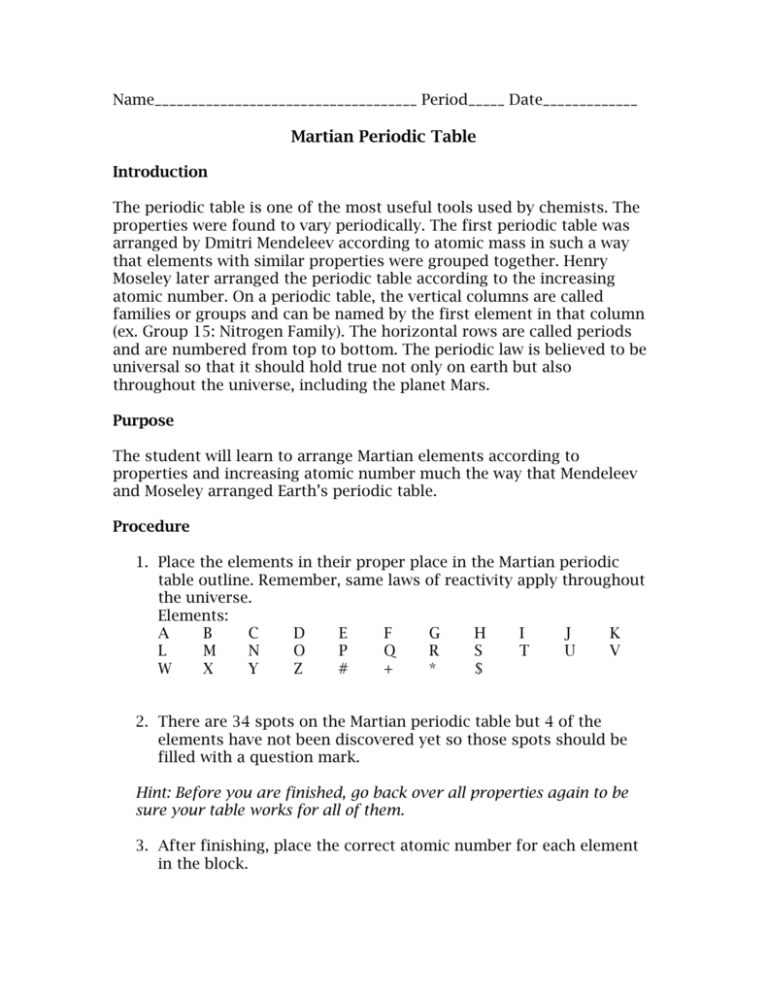
Name____________________________________ Period_____ Date_____________ Martian Periodic Table Introduction The periodic table is one of the most useful tools used by chemists. The properties were found to vary periodically. The first periodic table was arranged by Dmitri Mendeleev according to atomic mass in such a way that elements with similar properties were grouped together. Henry Moseley later arranged the periodic table according to the increasing atomic number. On a periodic table, the vertical columns are called families or groups and can be named by the first element in that column (ex. Group 15: Nitrogen Family). The horizontal rows are called periods and are numbered from top to bottom. The periodic law is believed to be universal so that it should hold true not only on earth but also throughout the universe, including the planet Mars. Purpose The student will learn to arrange Martian elements according to properties and increasing atomic number much the way that Mendeleev and Moseley arranged Earth’s periodic table. Procedure 1. Place the elements in their proper place in the Martian periodic table outline. Remember, same laws of reactivity apply throughout the universe. Elements: A B C D E F G H I J K L M N O P Q R S T U V W X Y Z # + * $ 2. There are 34 spots on the Martian periodic table but 4 of the elements have not been discovered yet so those spots should be filled with a question mark. Hint: Before you are finished, go back over all properties again to be sure your table works for all of them. 3. After finishing, place the correct atomic number for each element in the block. Properties of Martian Elements: 1. The metal with the largest atomic radius is X. 2. The smallest element in the most reactive nonmetal group is I. 3. The noble gases are B, L, W, and J. a. B has the smallest mass b. W has the largest mass c. L is in period 2 4. The least massive of all elements is A 5. All of the following elements have 3 energy levels. The number given is the number of valence electrons. $ 1 Y 3 M 5 Z 2 H 4 O 6 K 7 6. Element H has 14 protons 7. G has 7 electrons 8. C has an atomic mass of 5 and forms the compound CI. 9. Q has only 1 valence electron but has 4 energy levels 10.The E family is made up of E, Y, R and + in order of increasing mass. 11.*is the most massive of all discovered elements and is radioactive. 12.P is in period 5 and usually creates a +2 ion. 13. D is in period 2 and has the formula DI2 for one of its salts 14.F is like the Earth element carbon and is in the same family as H, T, and *. 15.The Martian universal solvent, which is like Earth’s most important liquid, has the formula A2N. 16.Here are a few compounds that typically form: AV DU #U #I2 FA4 #3S2
